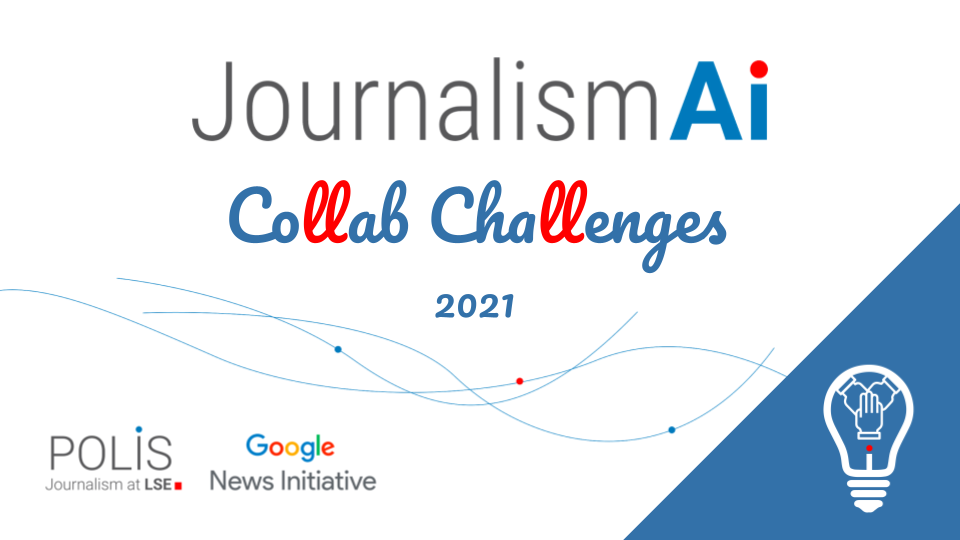For the second episode of “Newsroom Leaders Tell Us”, we asked five newsroom leaders from across the world how they manage and translate AI-related workflows to the rest of their organisation.
This episode features insights from:
- Alison Gow, Audience and Content Director, North West at Reach plc
- Padraic Cassidy, Editor, Automation and News Technology at Reuters
- Ulrike Köppen, Head of AI + Automation Lab, Bayerischer Rundfunk
- Romain Rouquier, Director of Data, the South China Morning Post
- Olle Zachrison, Head of Digital News Development, Swedish Radio
What tips can you share about how to successfully manage AI-related workflows within your newsroom?
1. Integrate systems into existing workflows
AI projects are not completed once a model is built. Integrating it into existing workflows is essential to simplify or enhance processes, explains Romain Rouquier (South China Morning Post):
 “UX/UI best practices, of which the know-how might not reside within a data team, should be implemented to ensure high user adoption. The model should be integrated into existing user tools, allow user feedback when predictions might be off, and learn and correct itself from those.” Additionally, end-users should also be properly trained and tracking should be in place to monitor performance and usage for them, he said.
“UX/UI best practices, of which the know-how might not reside within a data team, should be implemented to ensure high user adoption. The model should be integrated into existing user tools, allow user feedback when predictions might be off, and learn and correct itself from those.” Additionally, end-users should also be properly trained and tracking should be in place to monitor performance and usage for them, he said.
Olle Zachrison (Swedish Radio) suggests building a user-friendly interface on several fronts:
“For example, the practical handling of editorial algorithms needed for personalisation should ideally be integrated into the CMS so it is easy to use.”
2. Pay attention to the language you use
 Olle adds that it’s equally important to lower the threshold of interacting with the system for journalists. For instance, he recommends expressing technical terms in the same language normally used in the newsroom to make it easier for less tech-savvy reporters to interact with the systems.
Olle adds that it’s equally important to lower the threshold of interacting with the system for journalists. For instance, he recommends expressing technical terms in the same language normally used in the newsroom to make it easier for less tech-savvy reporters to interact with the systems.
Within Swedish Radio, for example, the system that operates the organisation’s “public service algorithm” deliberately avoids rating stories on a numeric scale like some of their competitors do:
“Our editors instead have to assess and select if a story is a “standard”, “large”, or “extraordinary” news piece. These news values, expressed in simple editorial terms, are then converted into the numbers that we need to feed the algorithm.”
3. Demystify misconceptions
It’s essential to begin by demystifying journalists’ misconceptions about AI, says Padraic Cassidy (Reuters):
 “Make sure the newsroom understand that, in most instances, new AI or ML processes are designed only to replace repetitive, time-consuming, and low-value tasks, and not journalists themselves.”
“Make sure the newsroom understand that, in most instances, new AI or ML processes are designed only to replace repetitive, time-consuming, and low-value tasks, and not journalists themselves.”
To be successful, you need to clearly state the benefit for your newsroom in terms of time saved, the scale of coverage, and the potential for new story ideas.
4. Share your learnings
Alison Gow (Reach Plc) also suggests sharing what you learn with as many people as possible within the organisation: “Share across the company the knowledge you gain, so others can also see the benefits of using AI. And embrace an open-source approach so that other newsrooms can benefit, share feedback and their knowledge and expertise.”
5. Focus on your use case
Stay focused on your use case, recommends Uli Köppen, who leads the AI + Automation Lab at Bayerischer Rundfunk (BR). The more the process is informed directly by your specific use case, the better the results of the AI solutions you will build.
 For example, when BR trained their summariser prototype, they learned that it worked best for short journalistic texts. The reason being that it just was not trained on longer genres:
For example, when BR trained their summariser prototype, they learned that it worked best for short journalistic texts. The reason being that it just was not trained on longer genres:
“It’s a good time investment to get to know your use case very well and use it to inform the algorithmic process before you start training the algorithm and building your tools.”
Uli also suggests allocating a dedicated team and budget for such projects since they often involve long and intensive processes.
If you’re interested in further insights from newsroom leaders on using AI, read the first part of this series: How to create an AI strategy for your newsroom.
This article was written by Lakshmi Sivadas and edited by Sabrina Argoub, JournalismAI Community Coordinators.
On our Twitter page, you can find our “Newsroom Leaders Tell Us” thread. Click here to join the conversation and leave your comments.
JournalismAI is a project of POLIS and it’s powered by the Google News Initiative.







